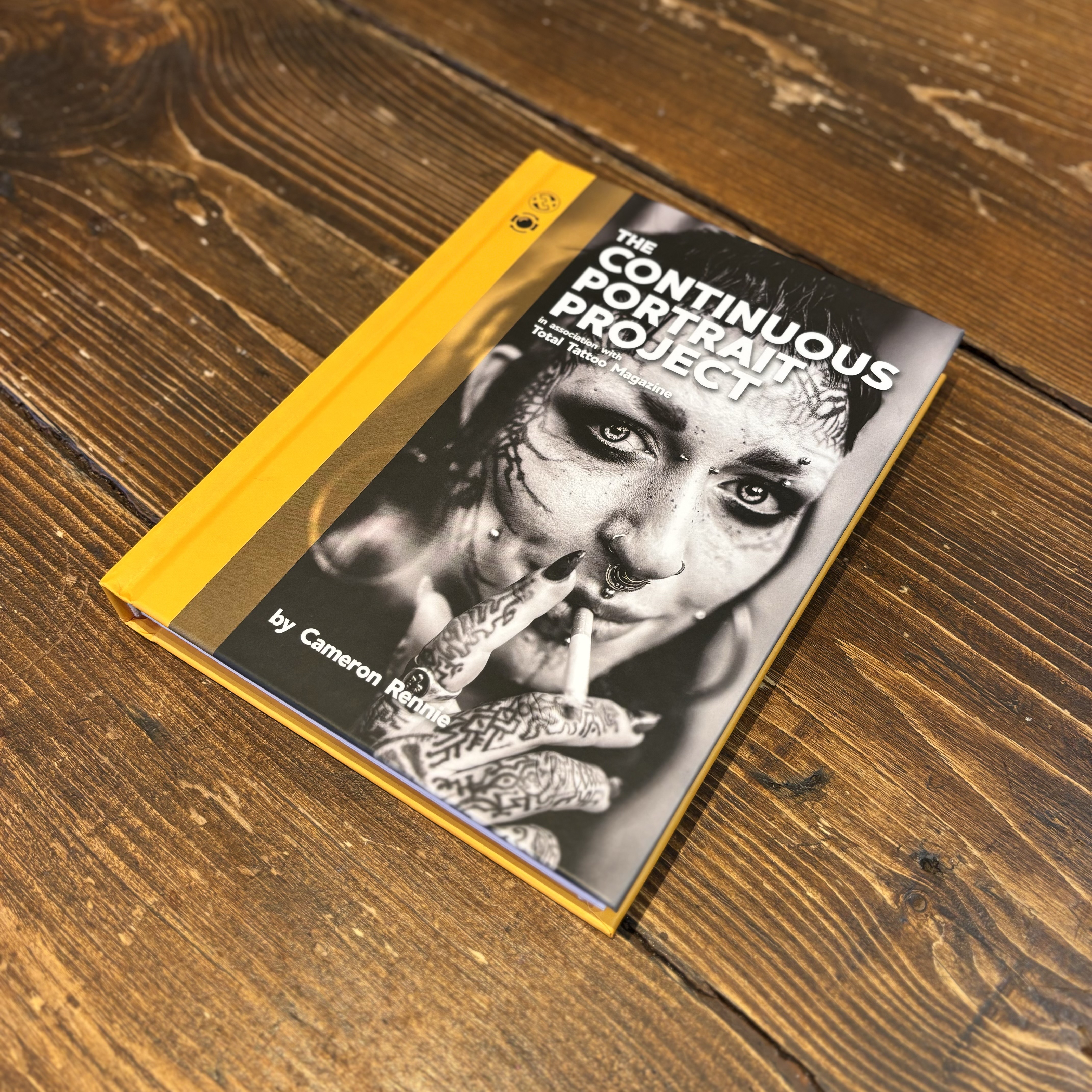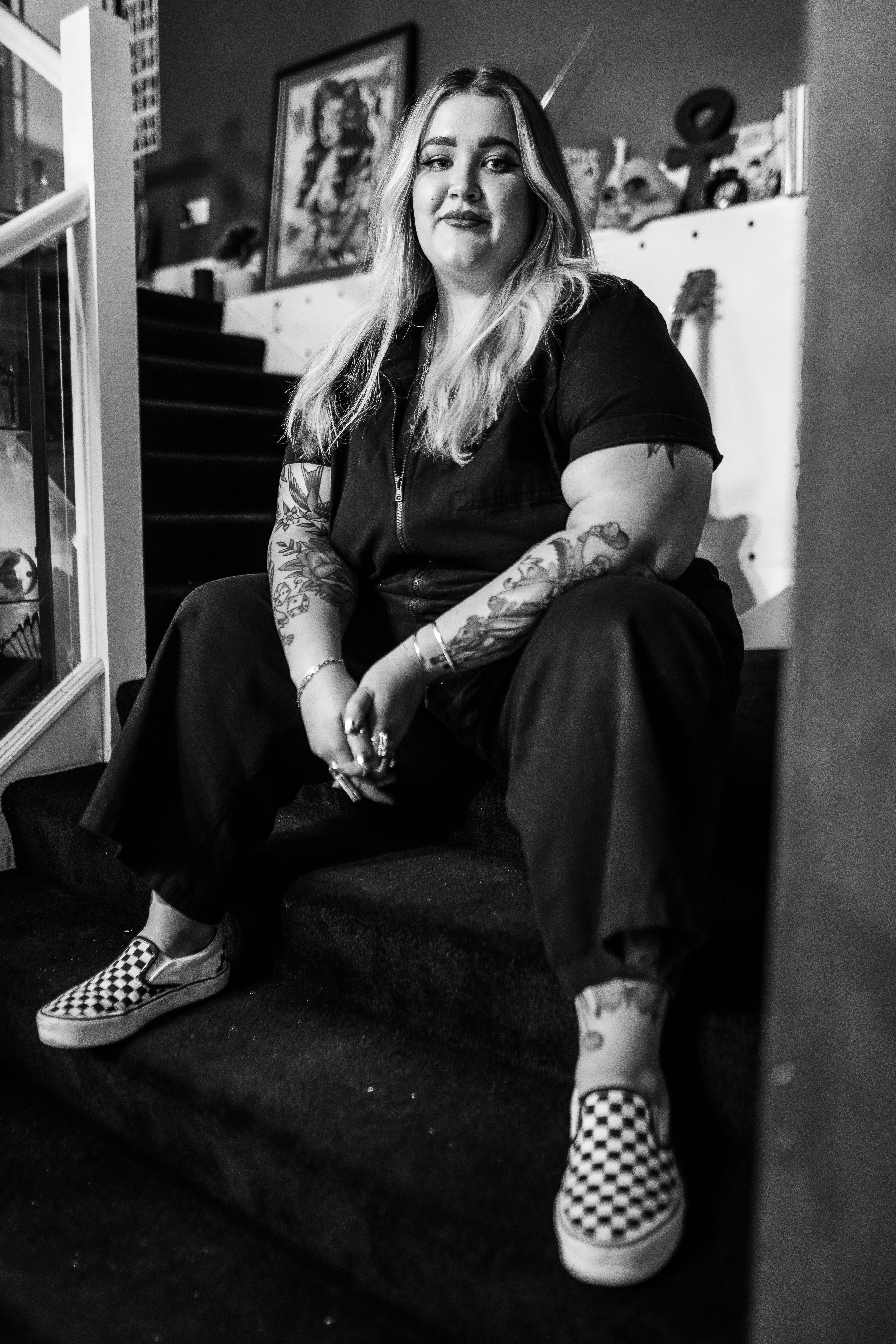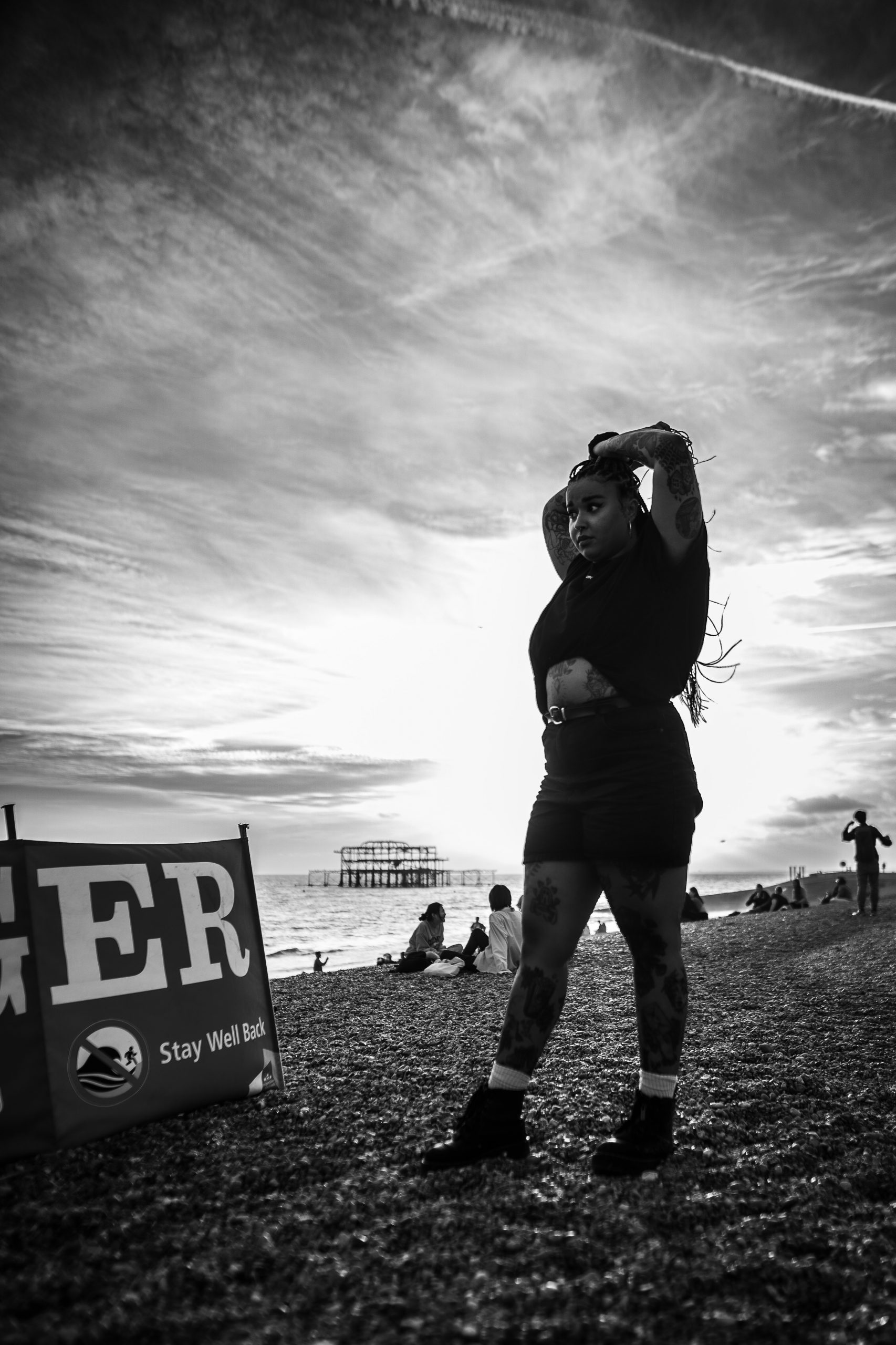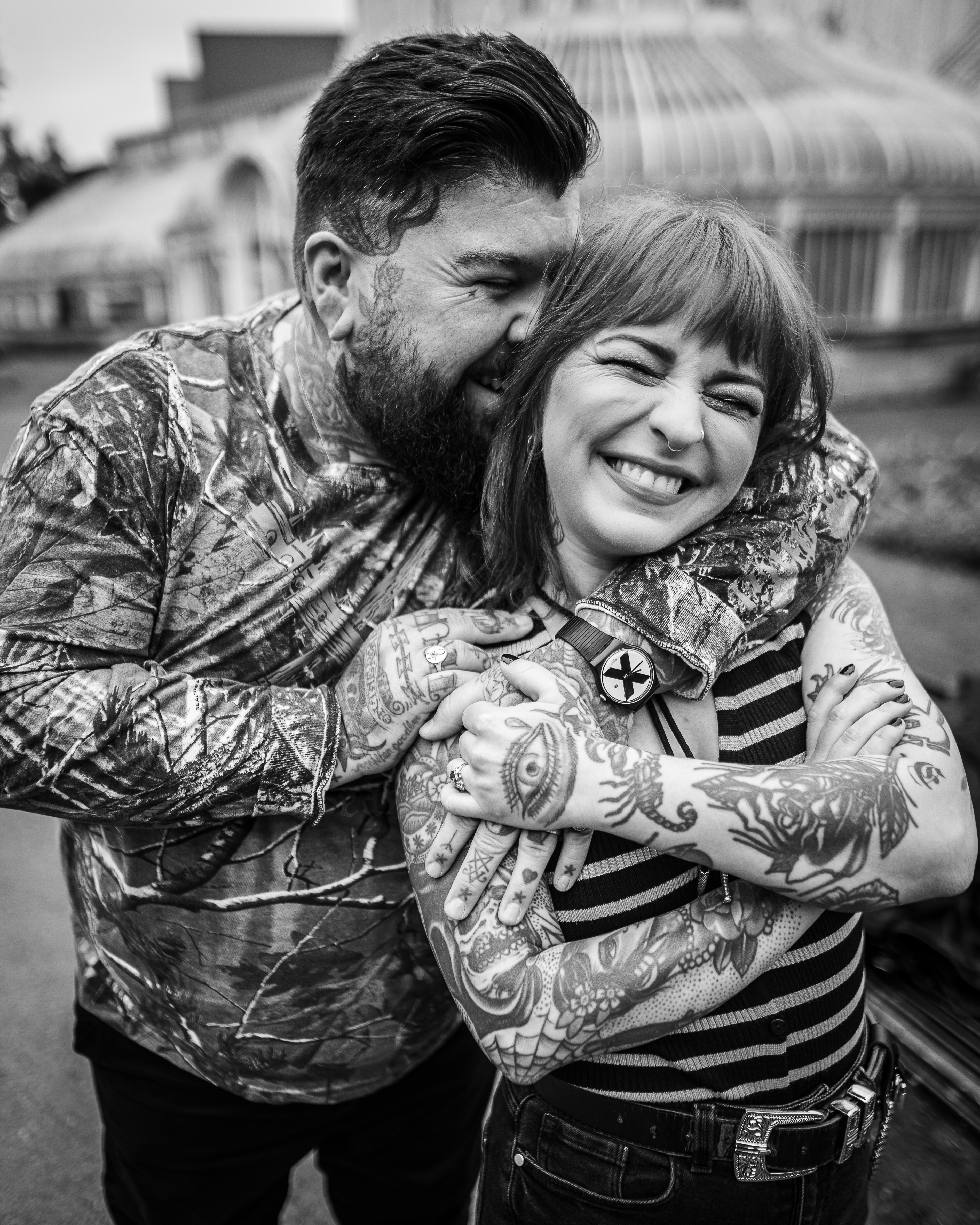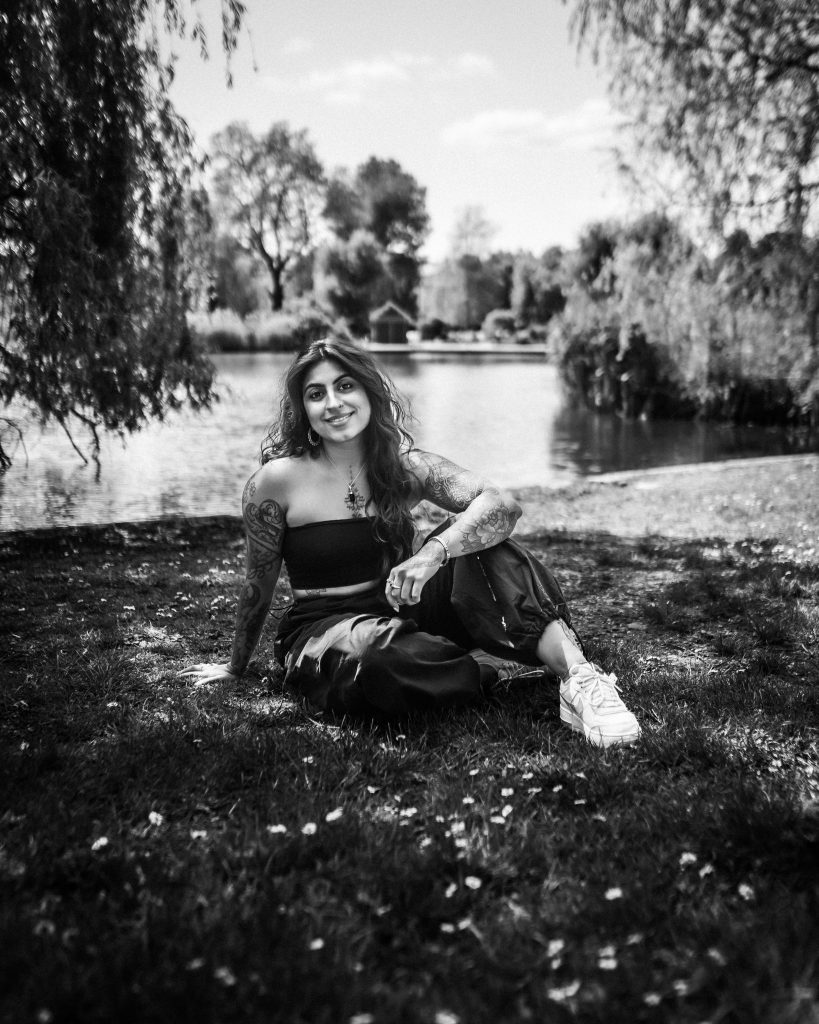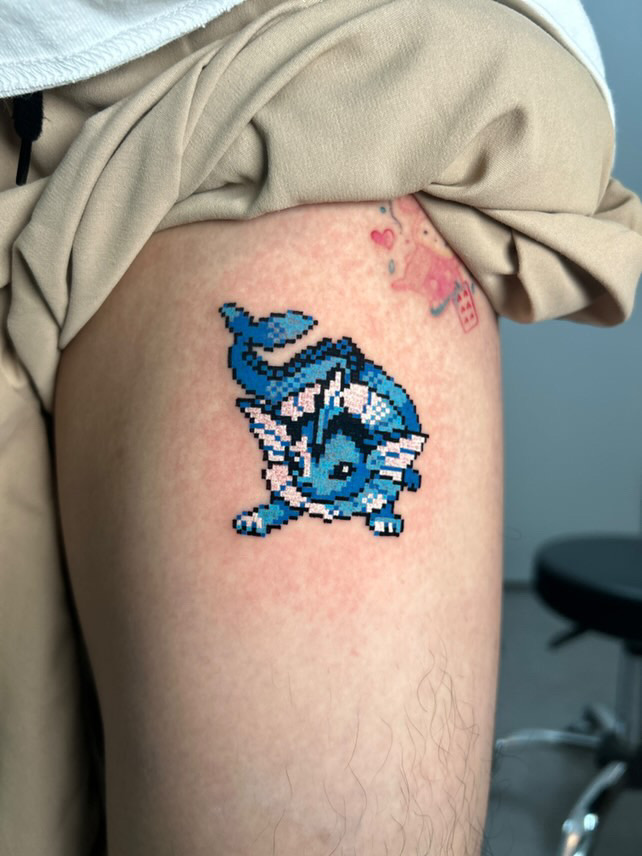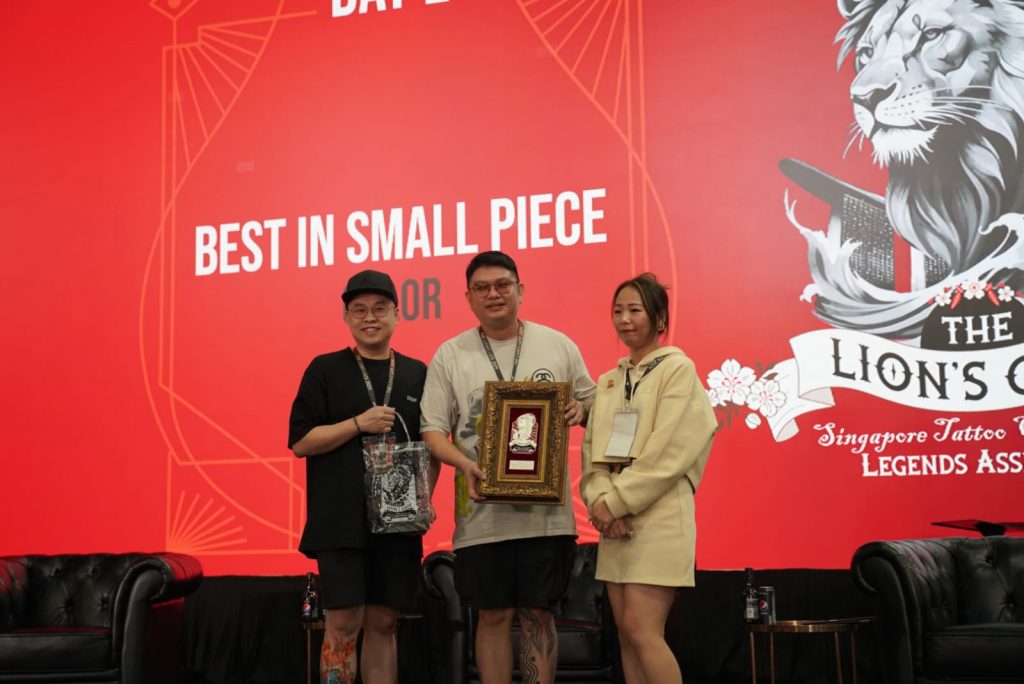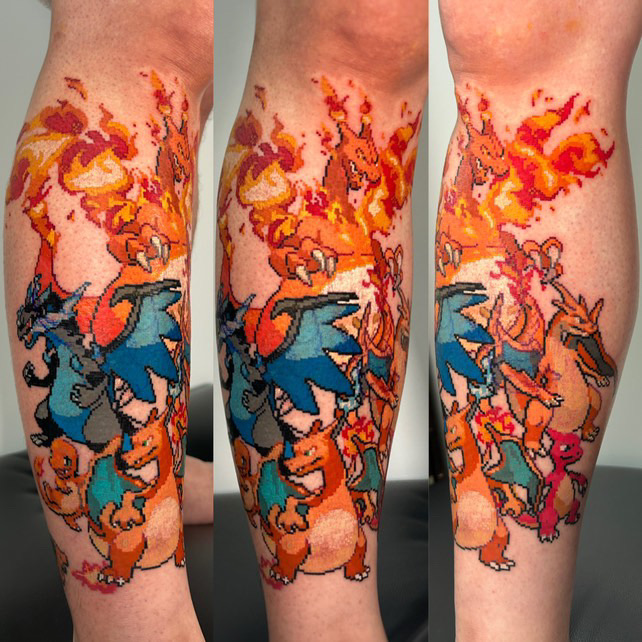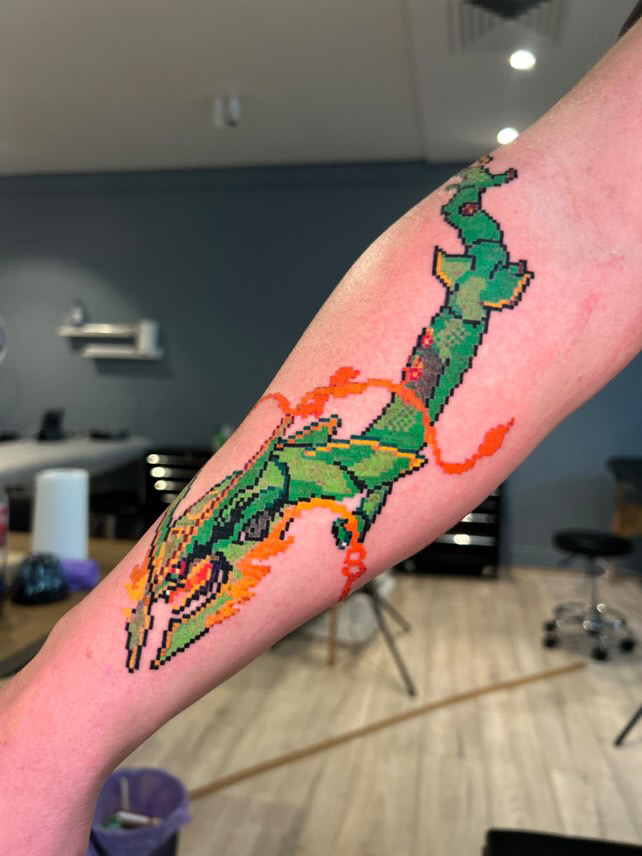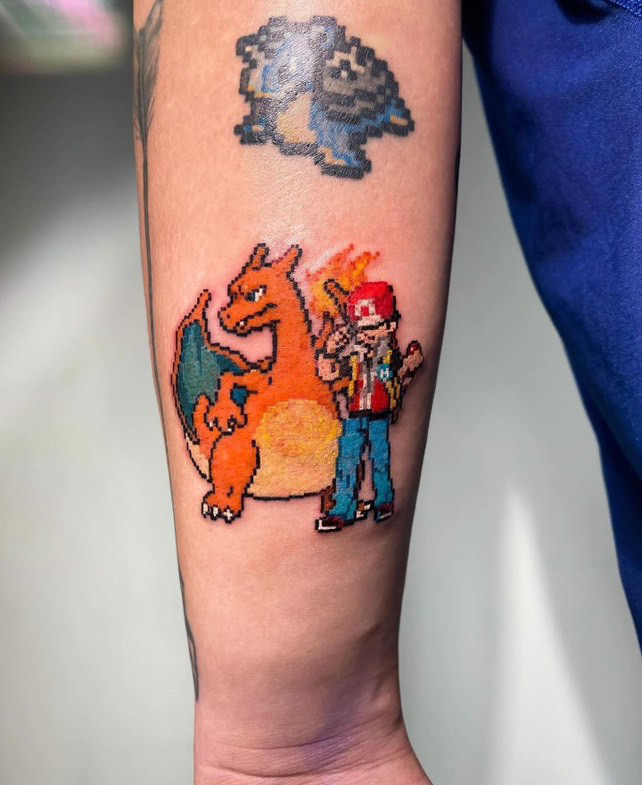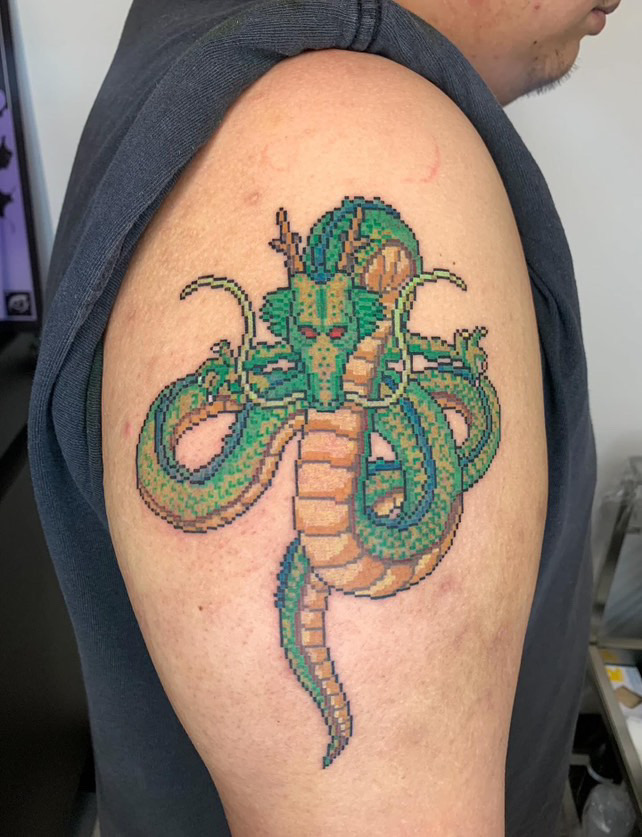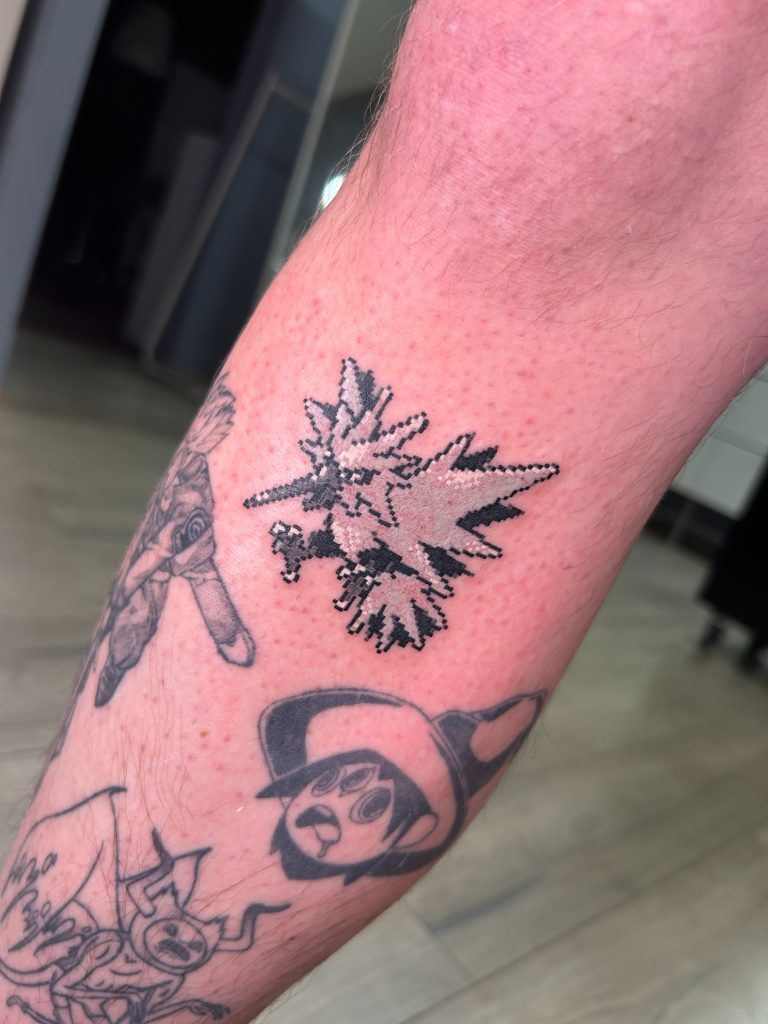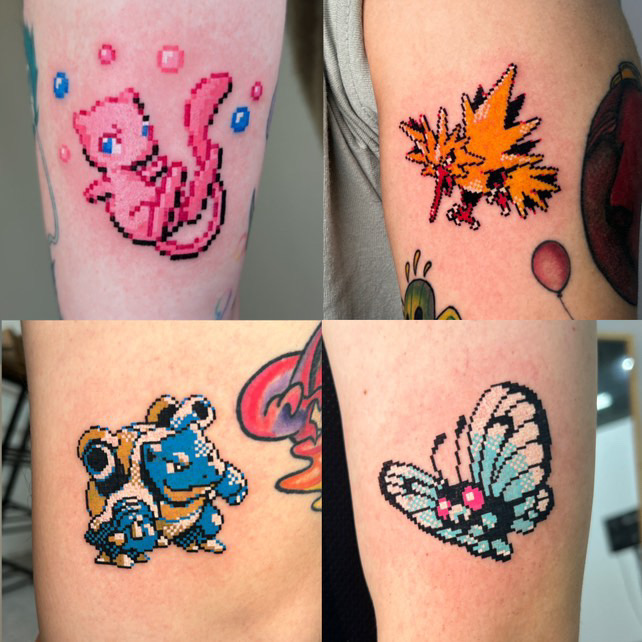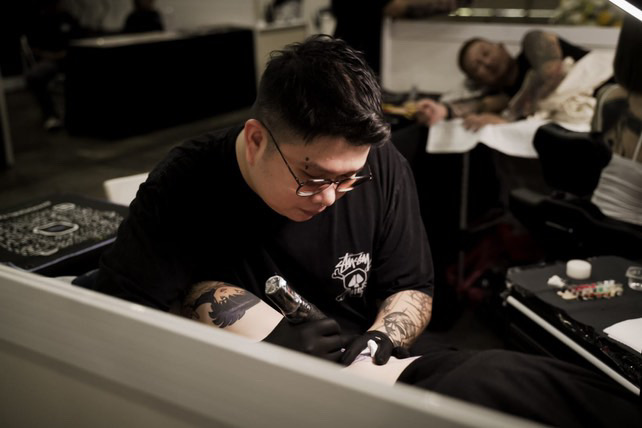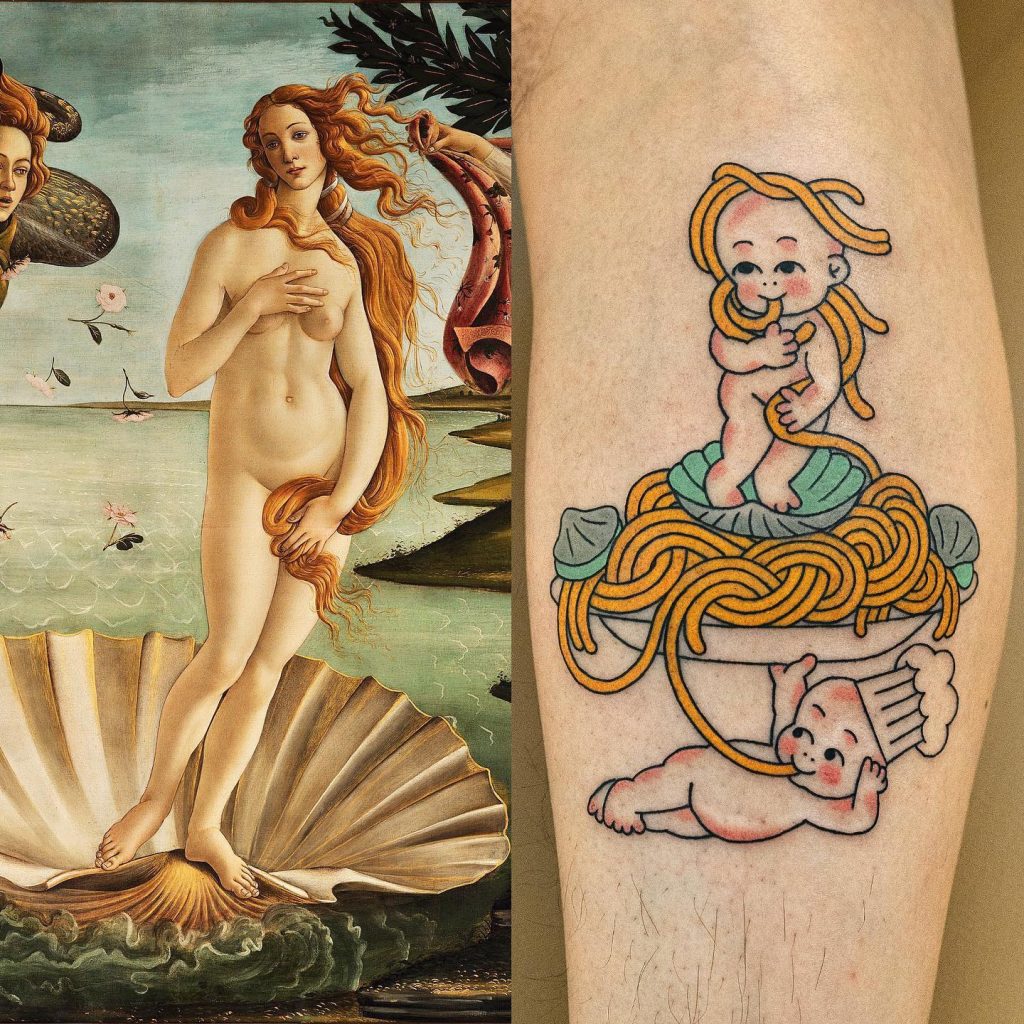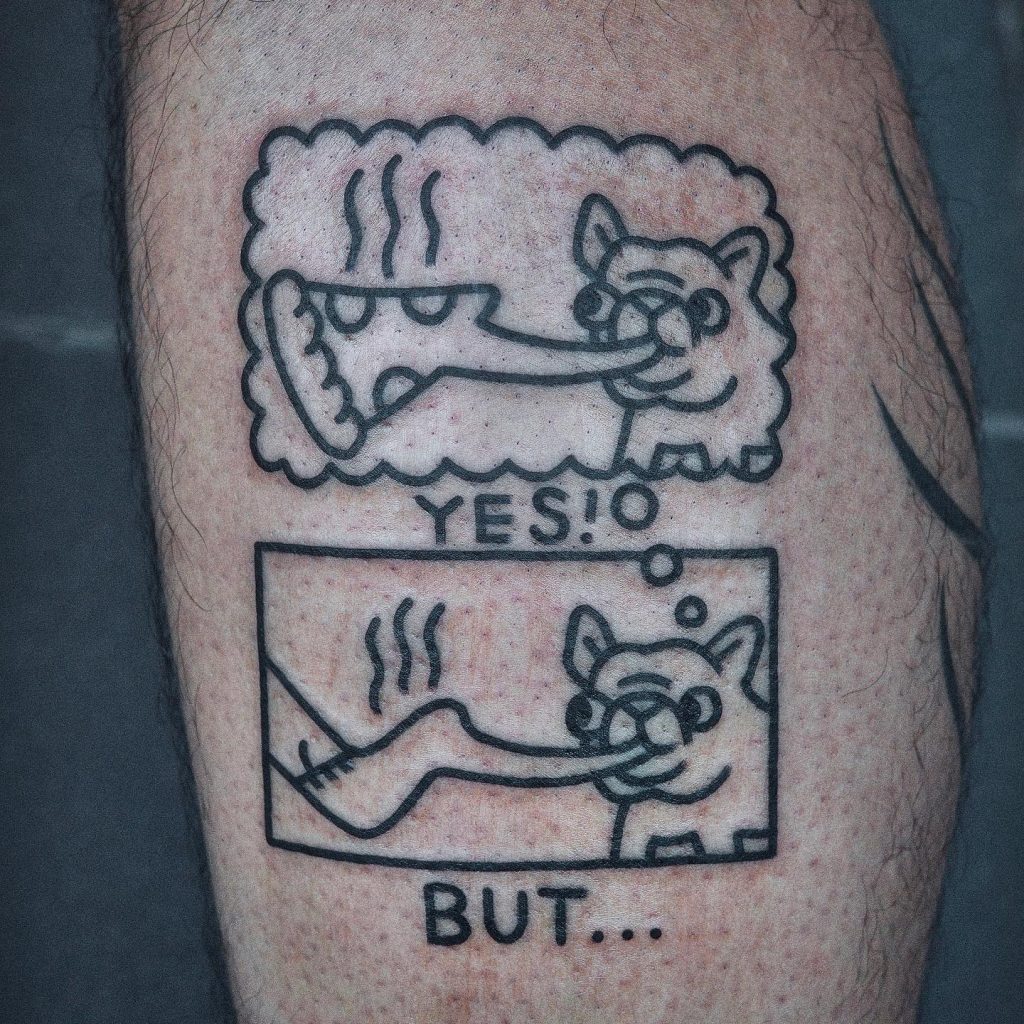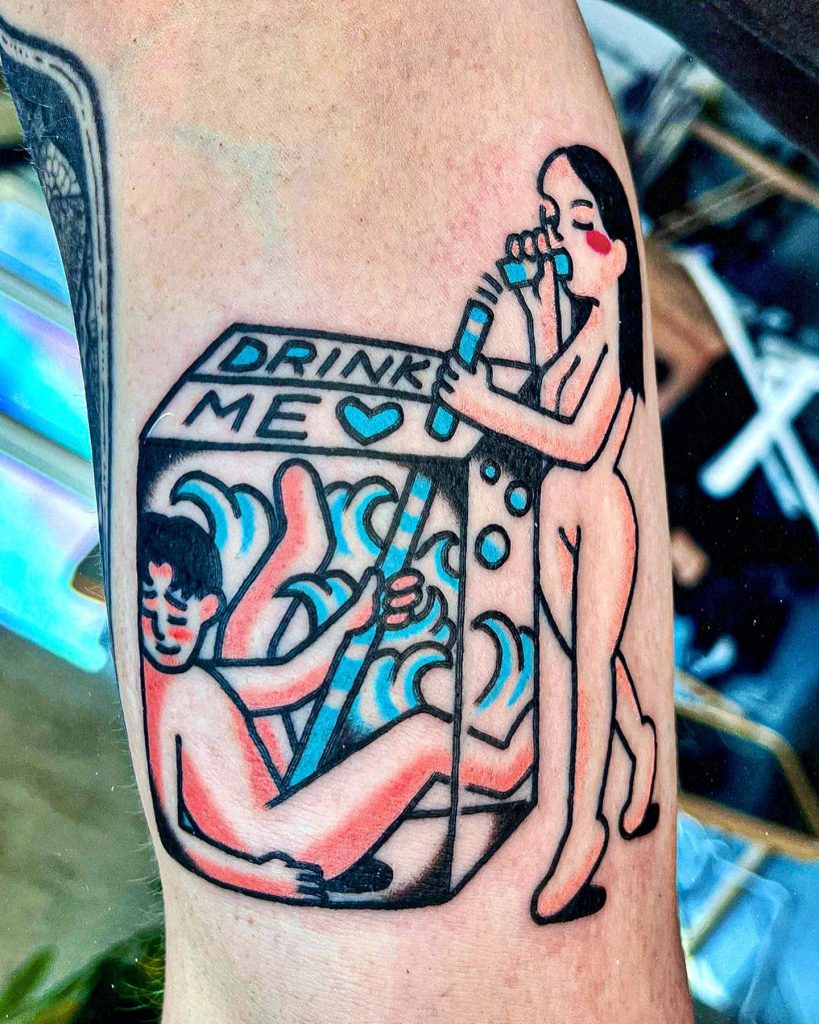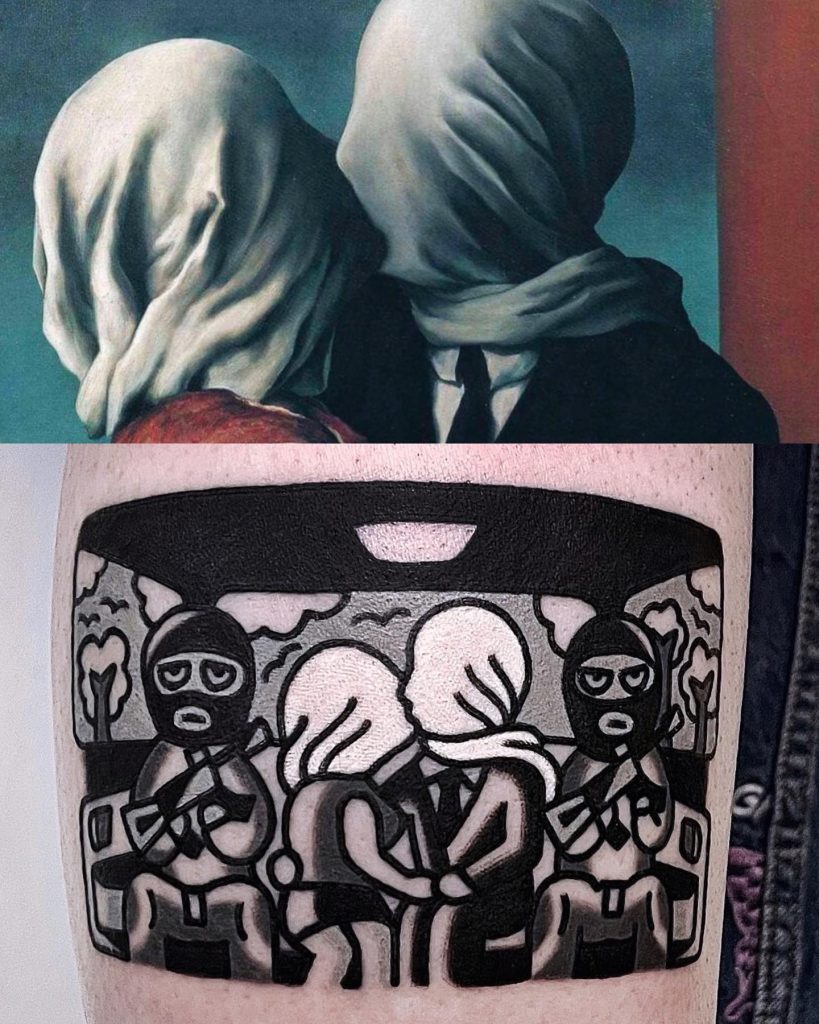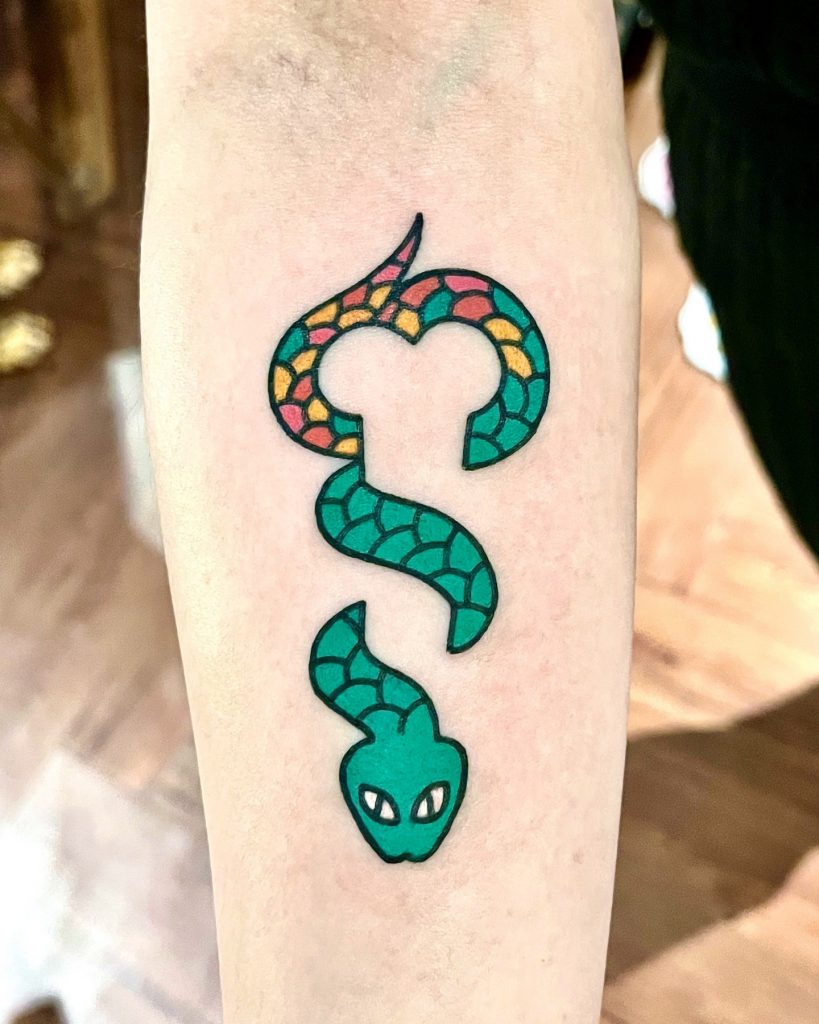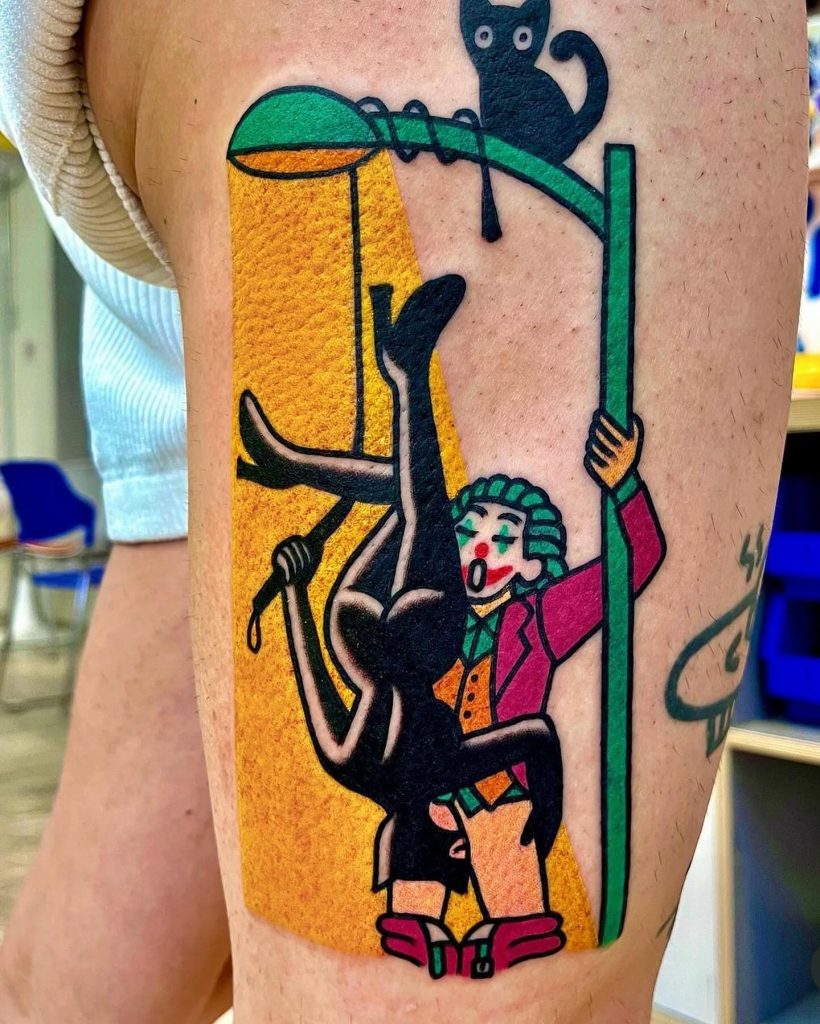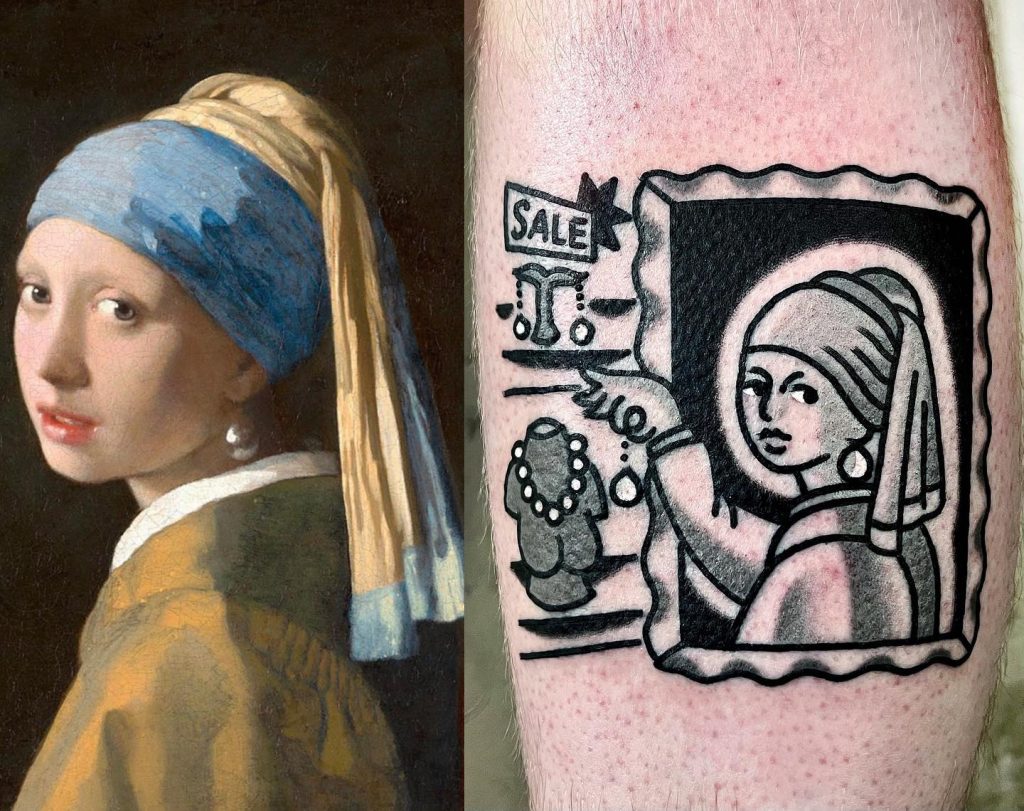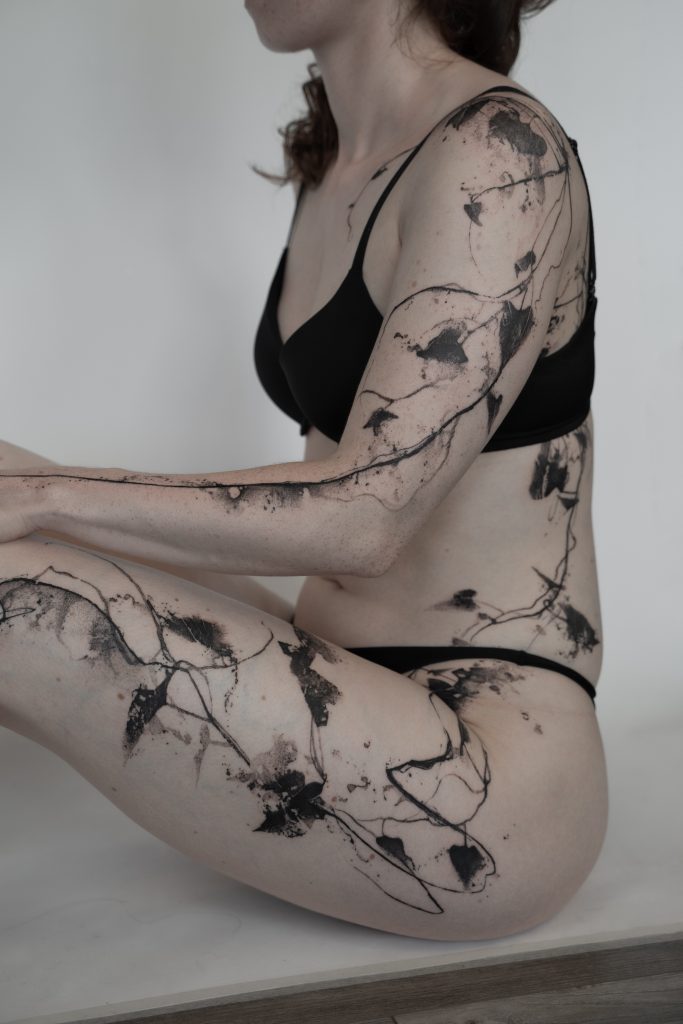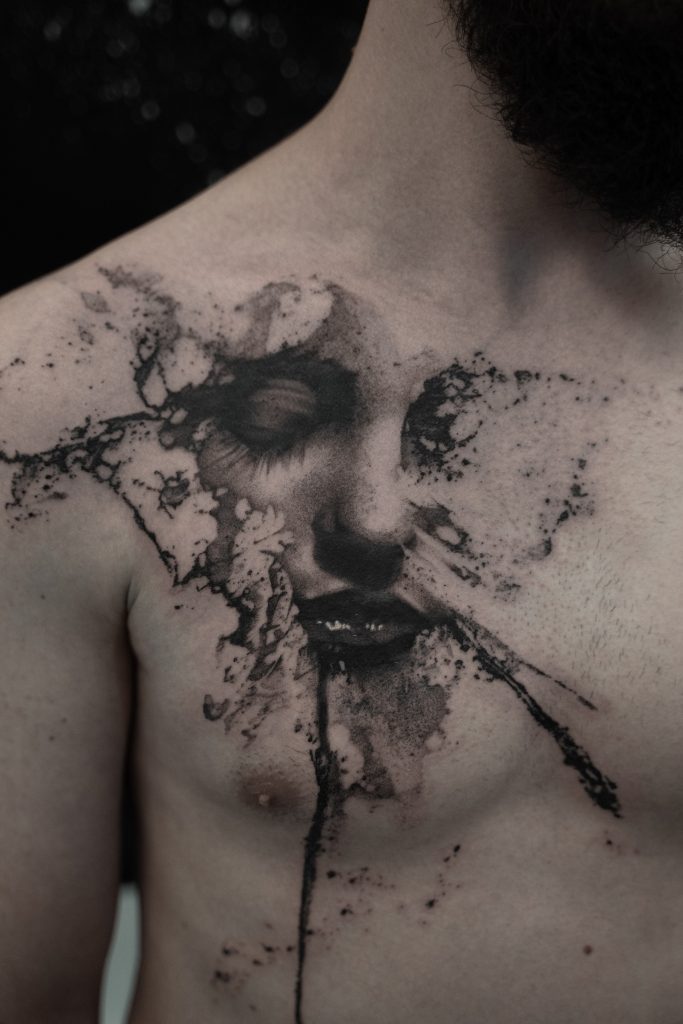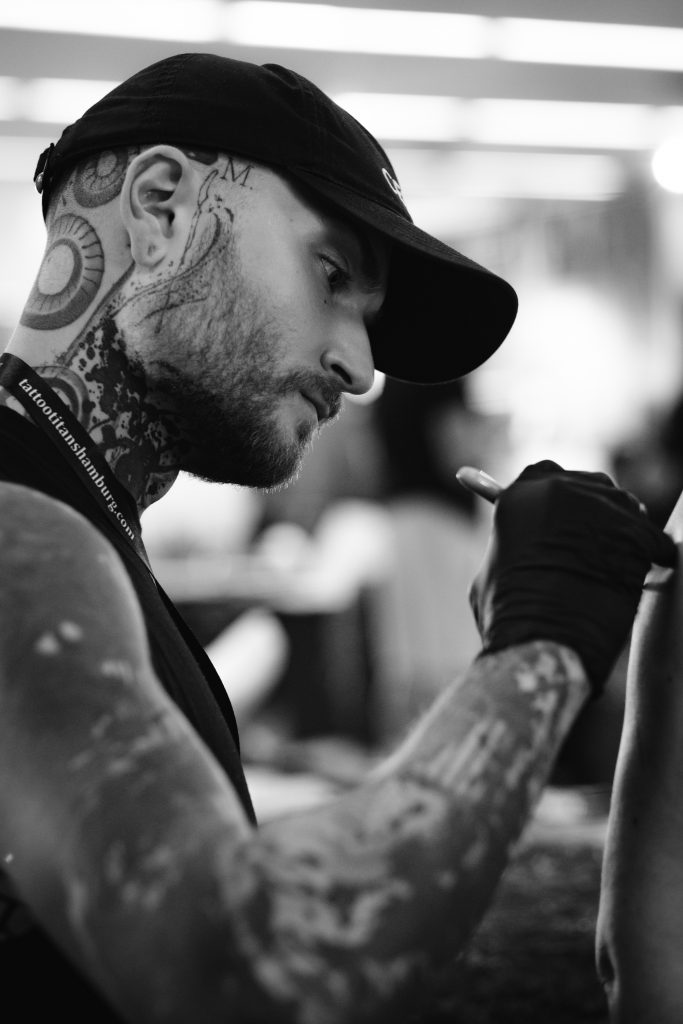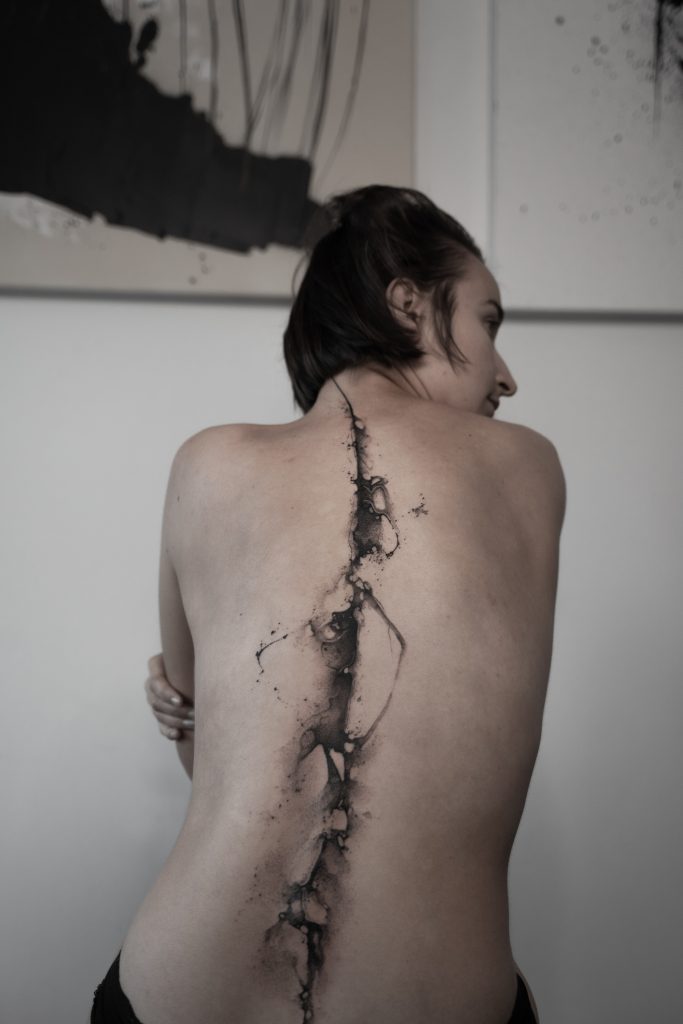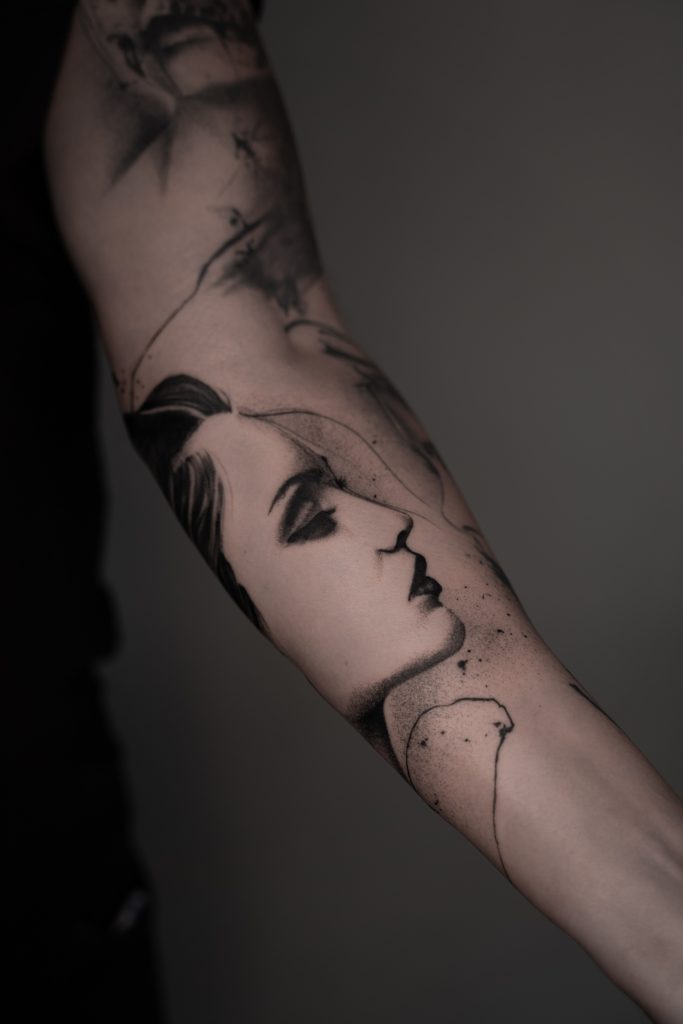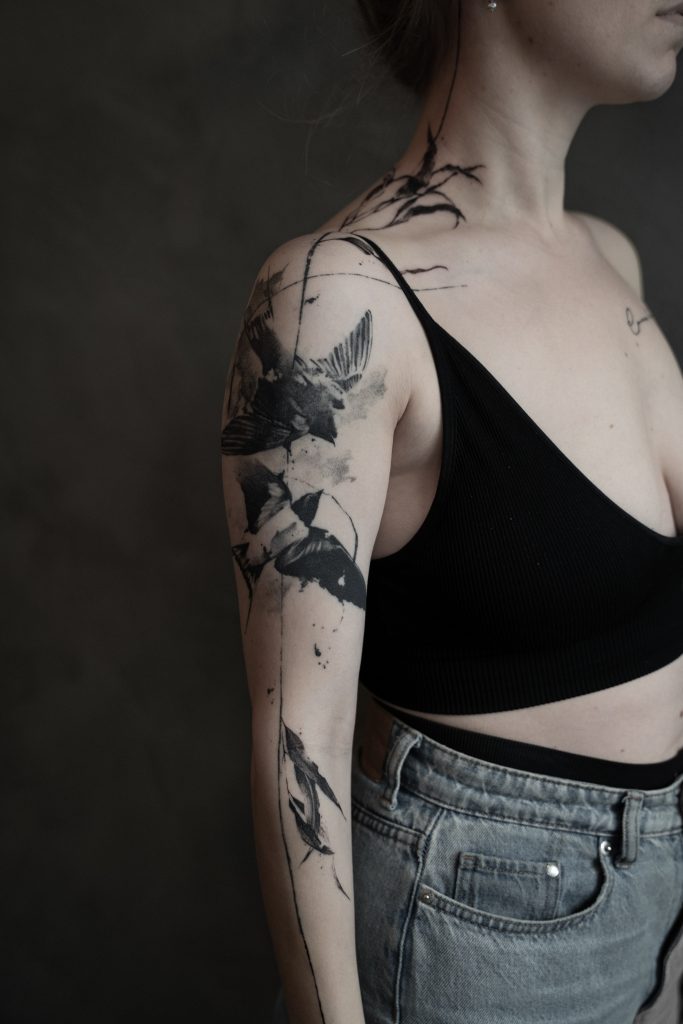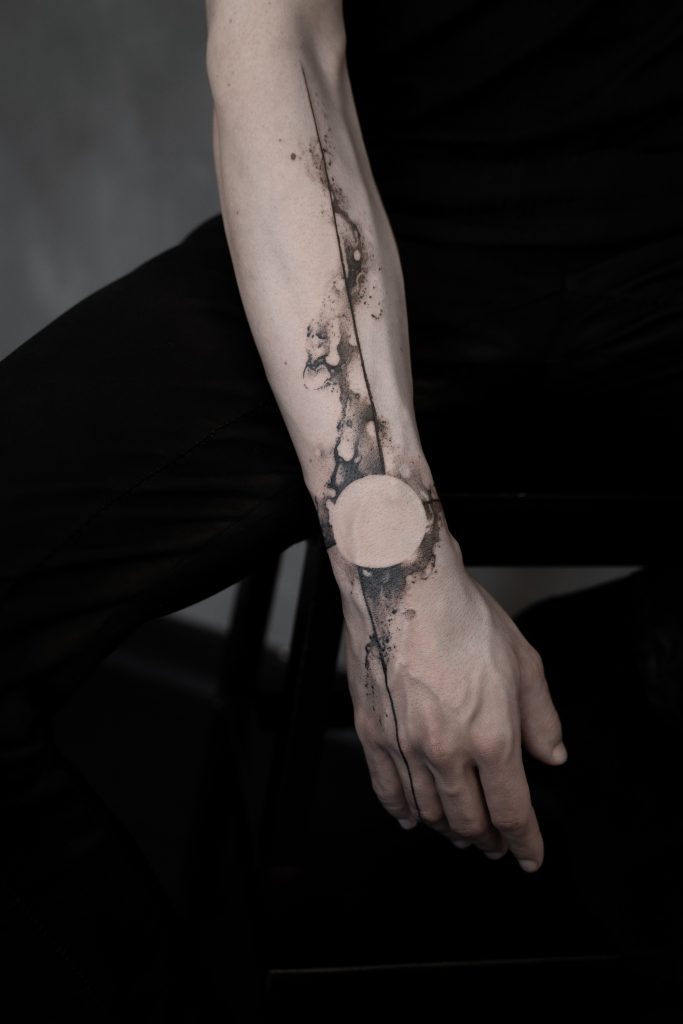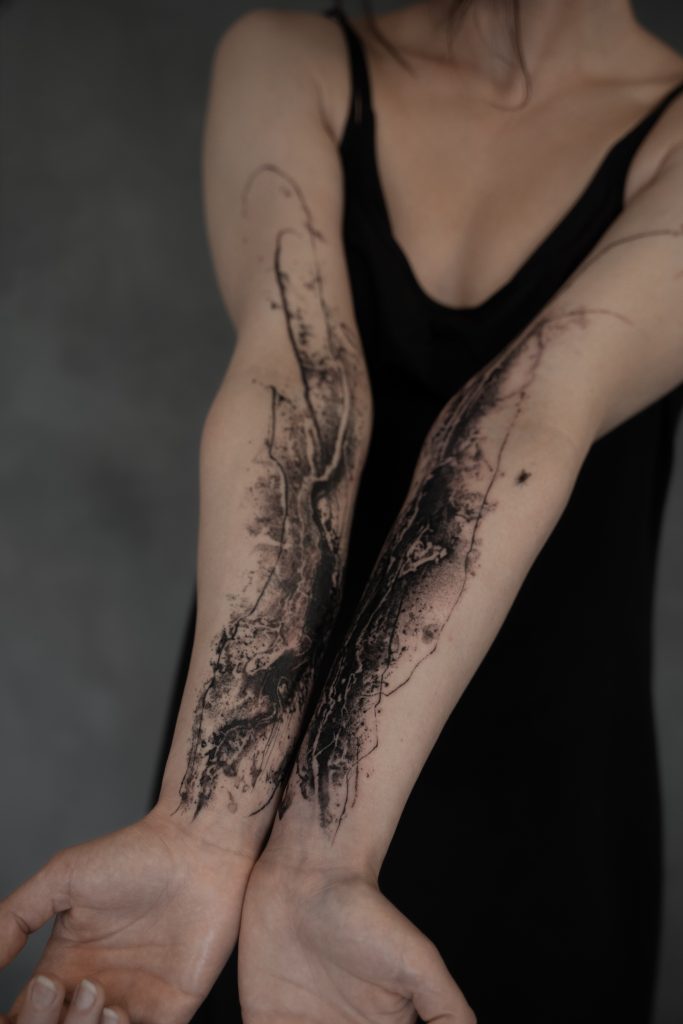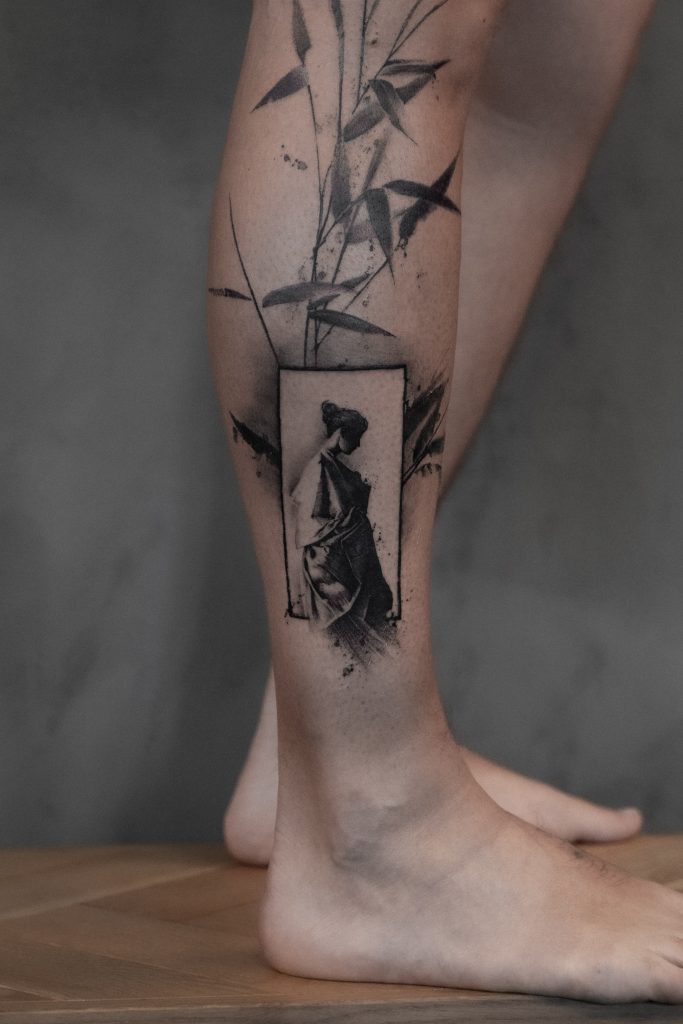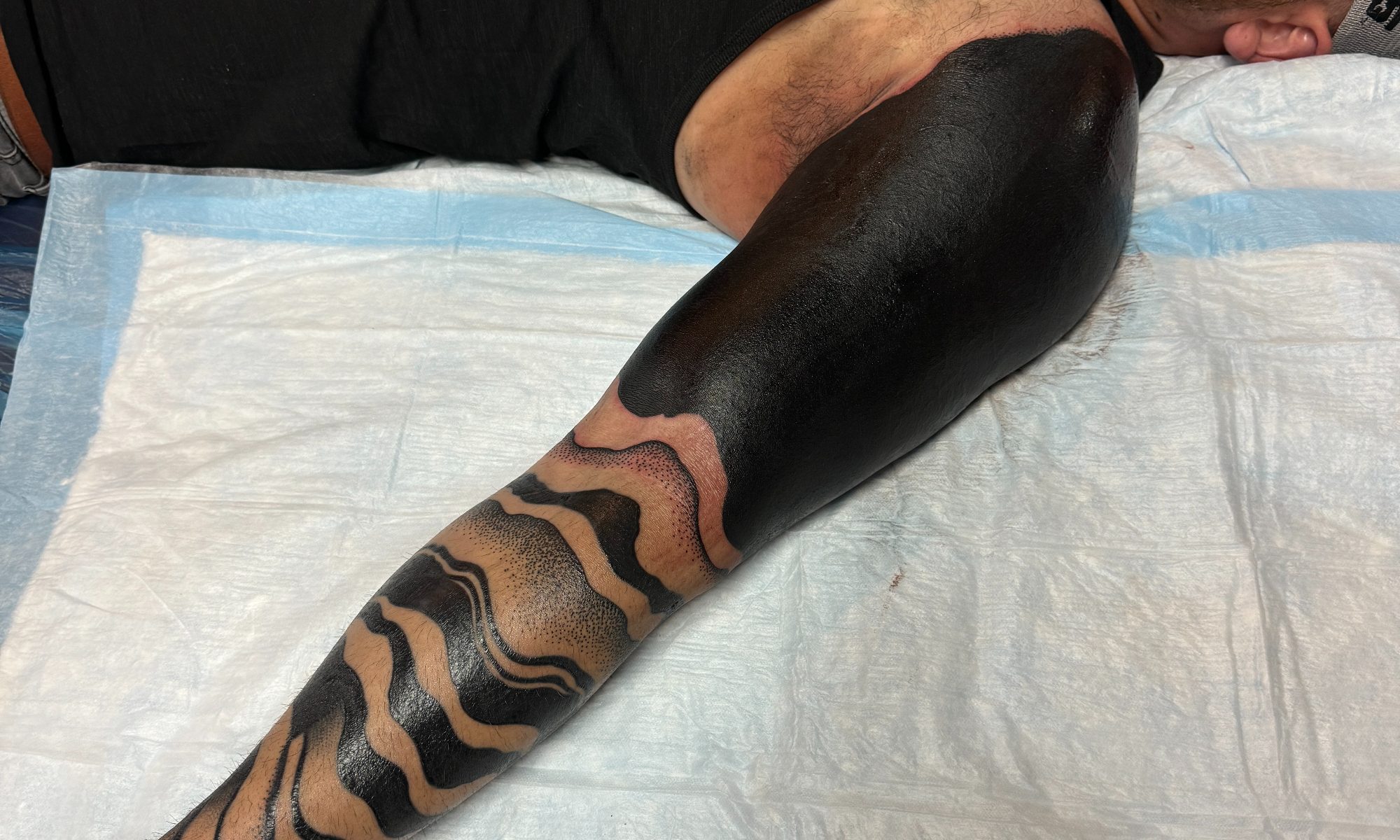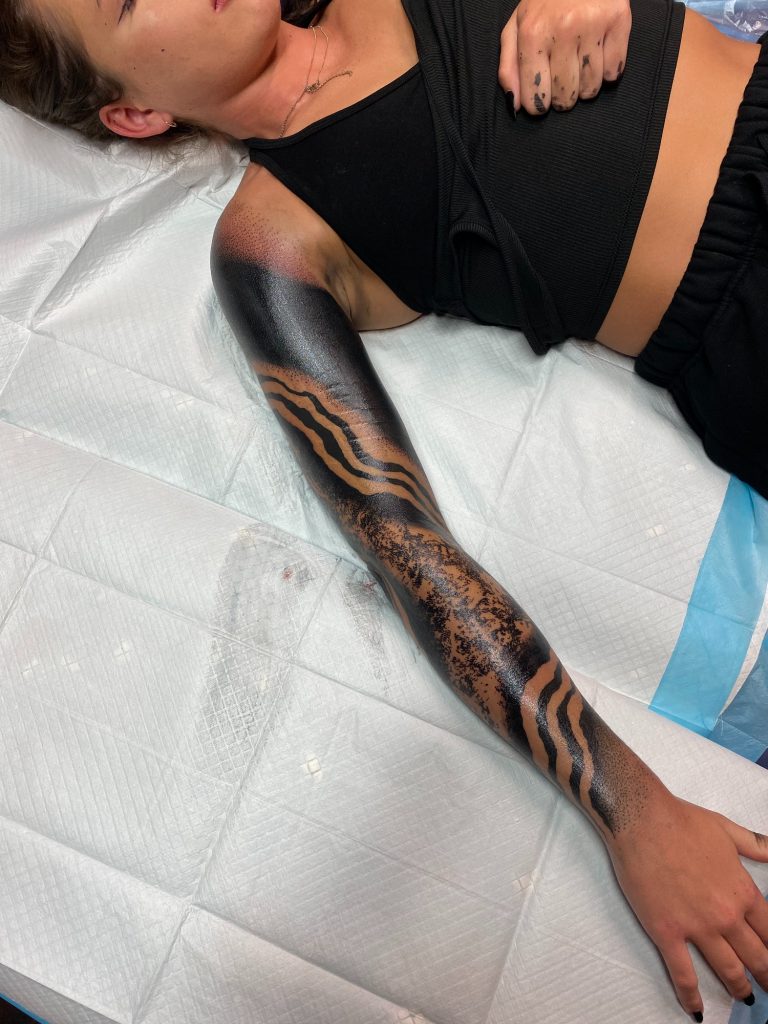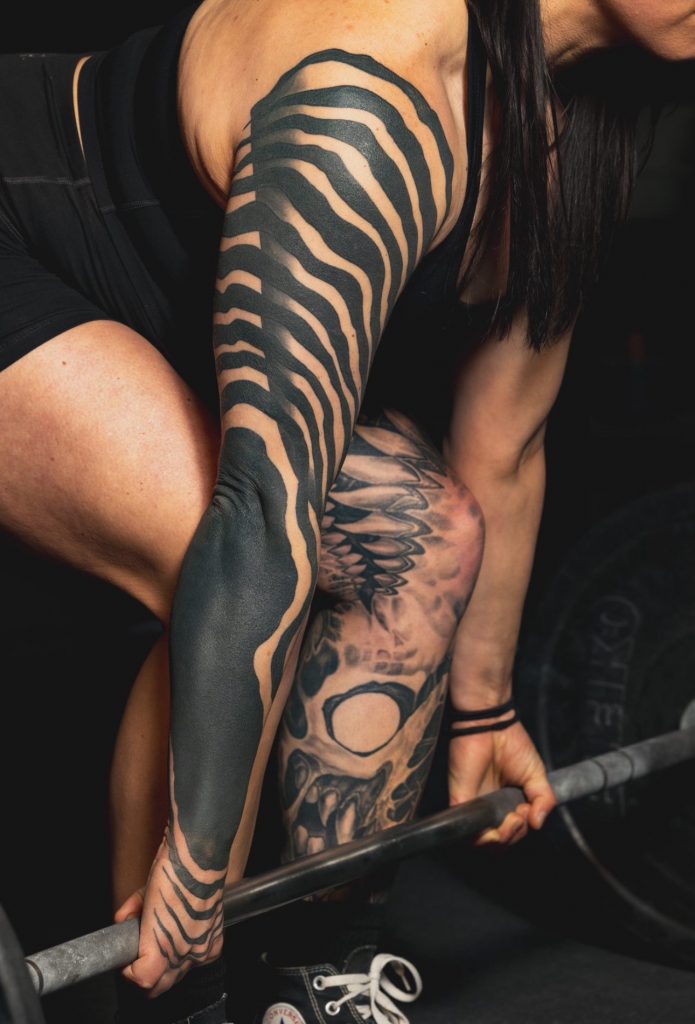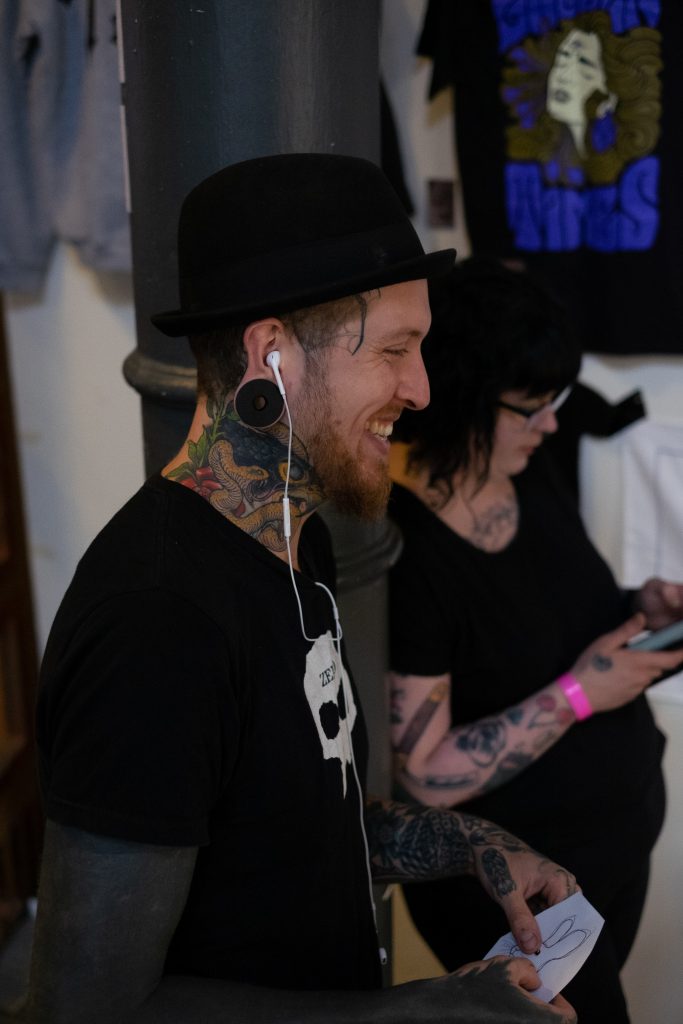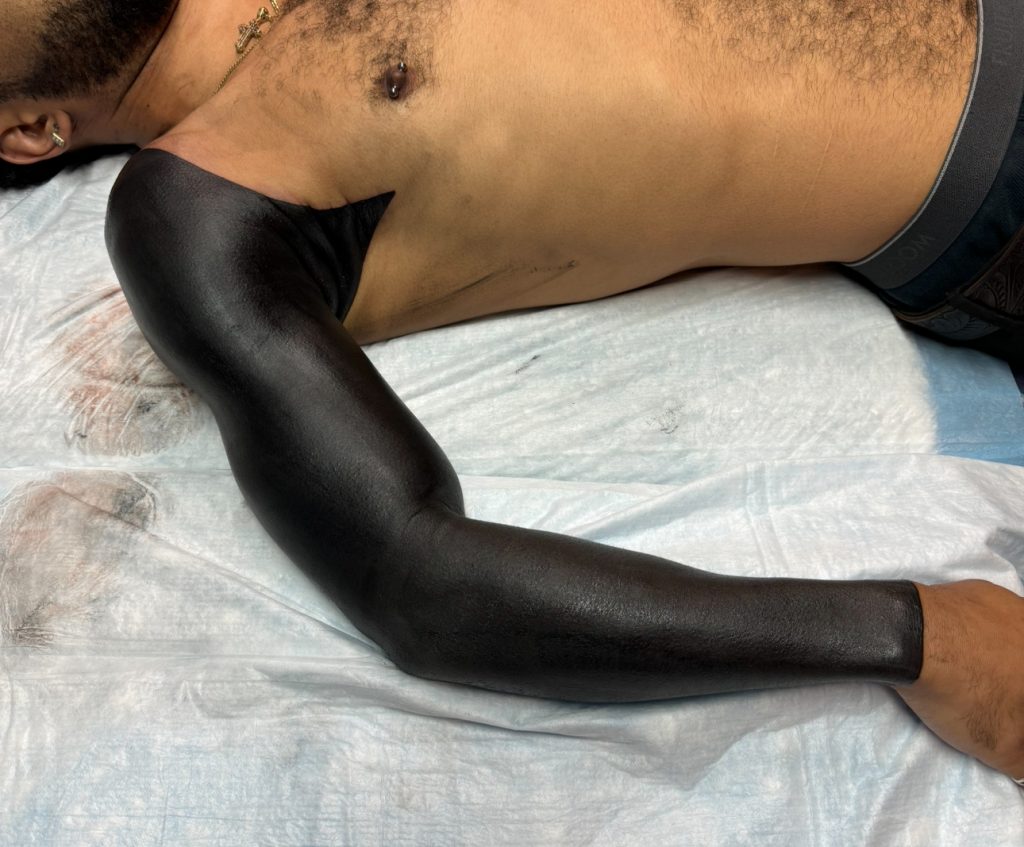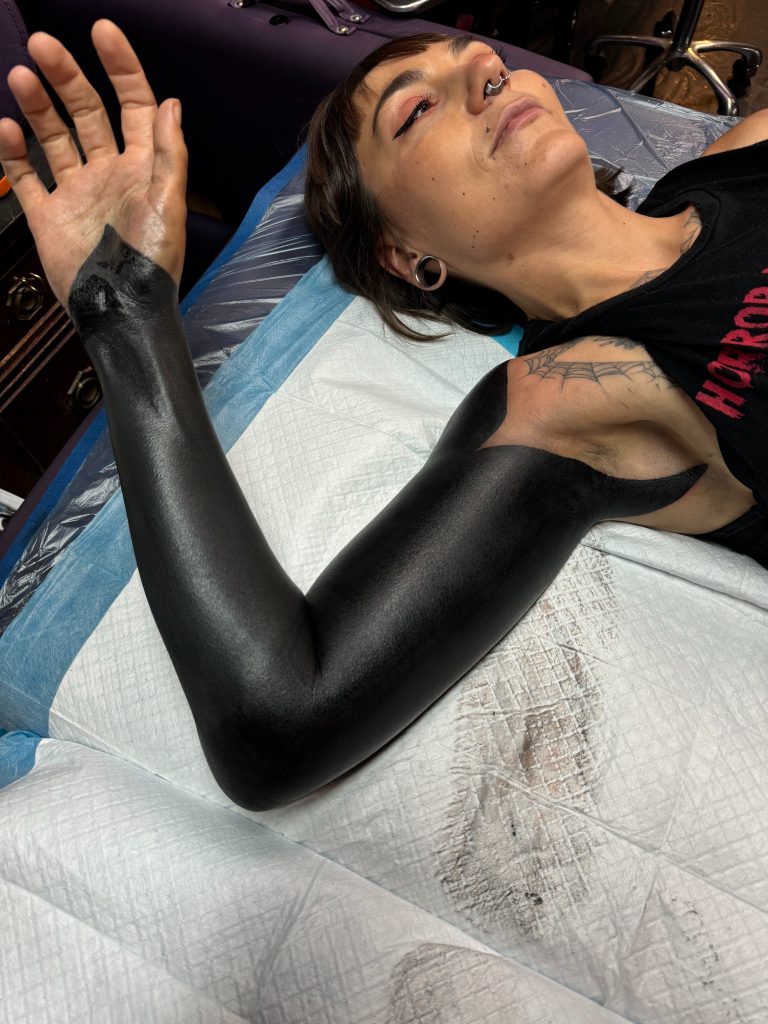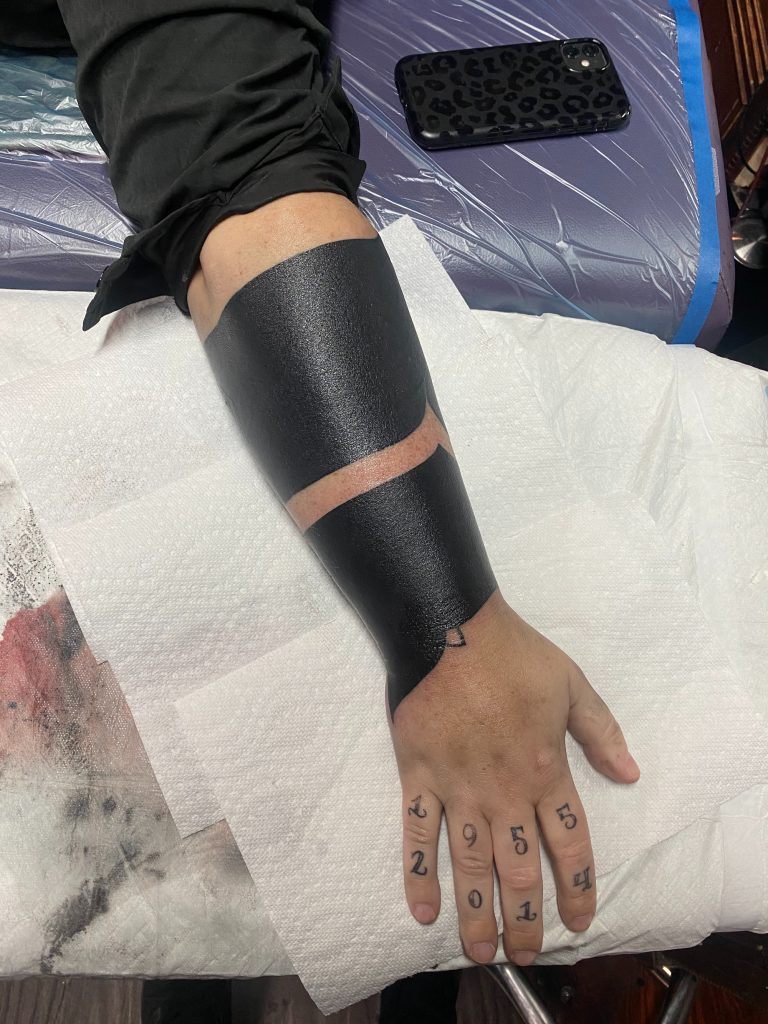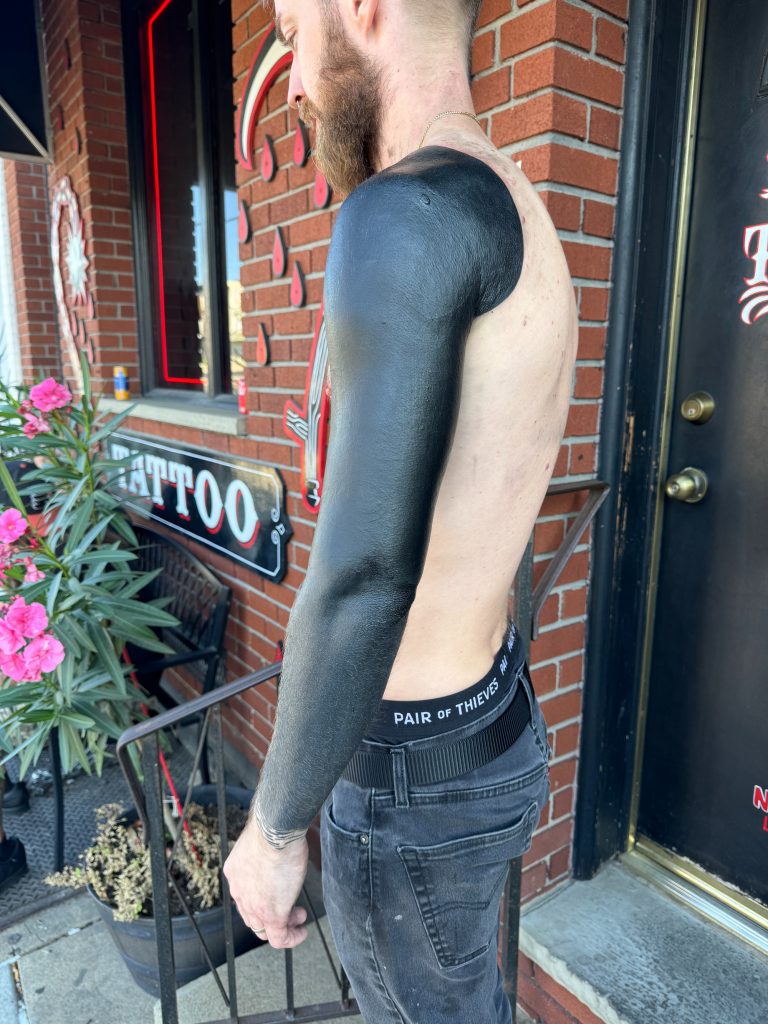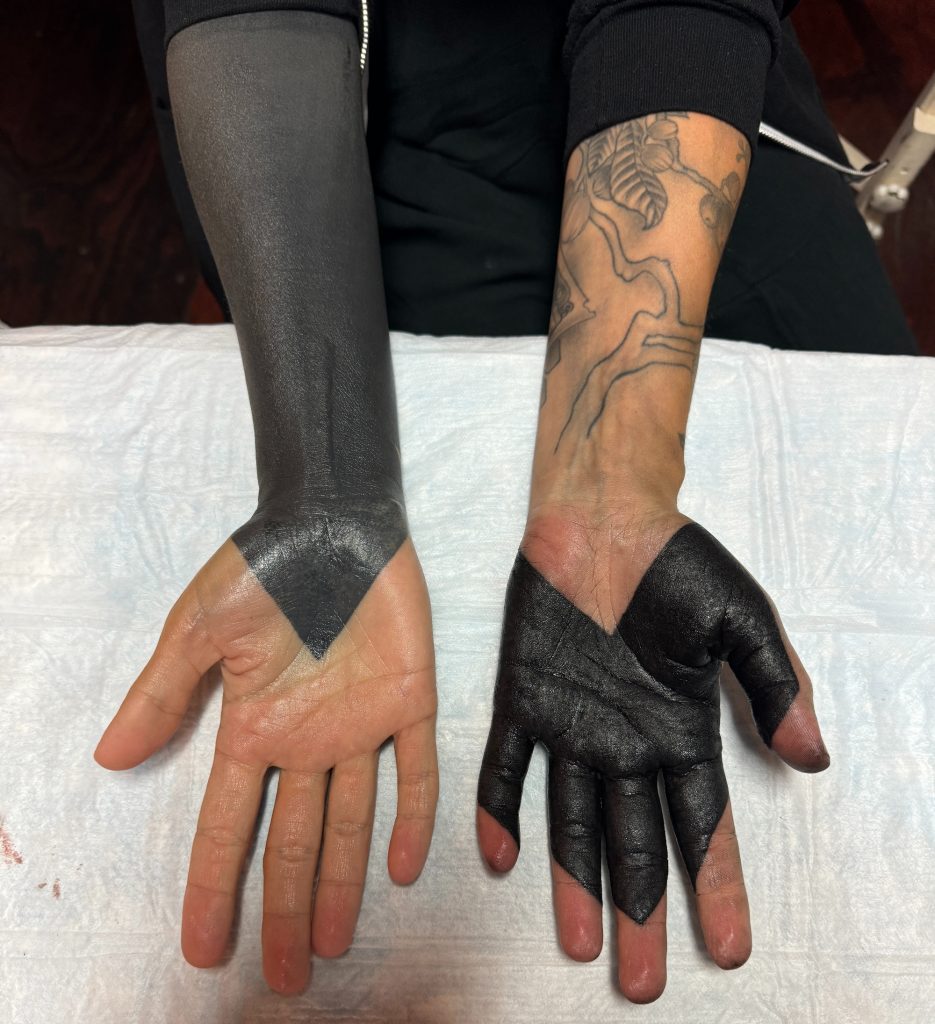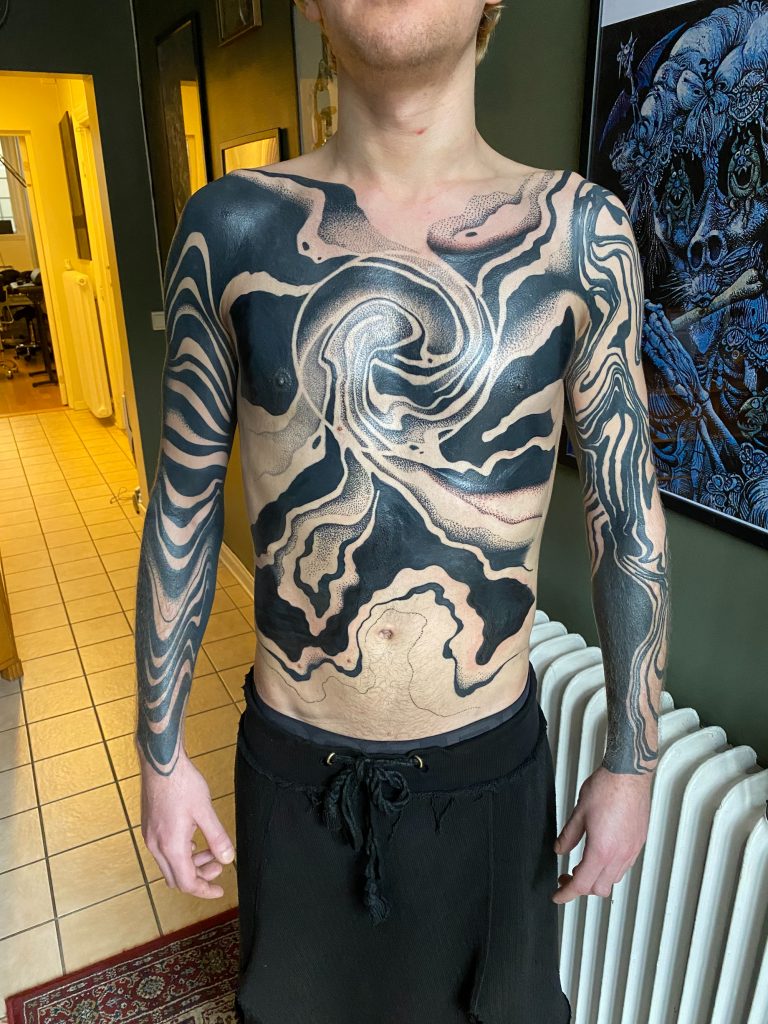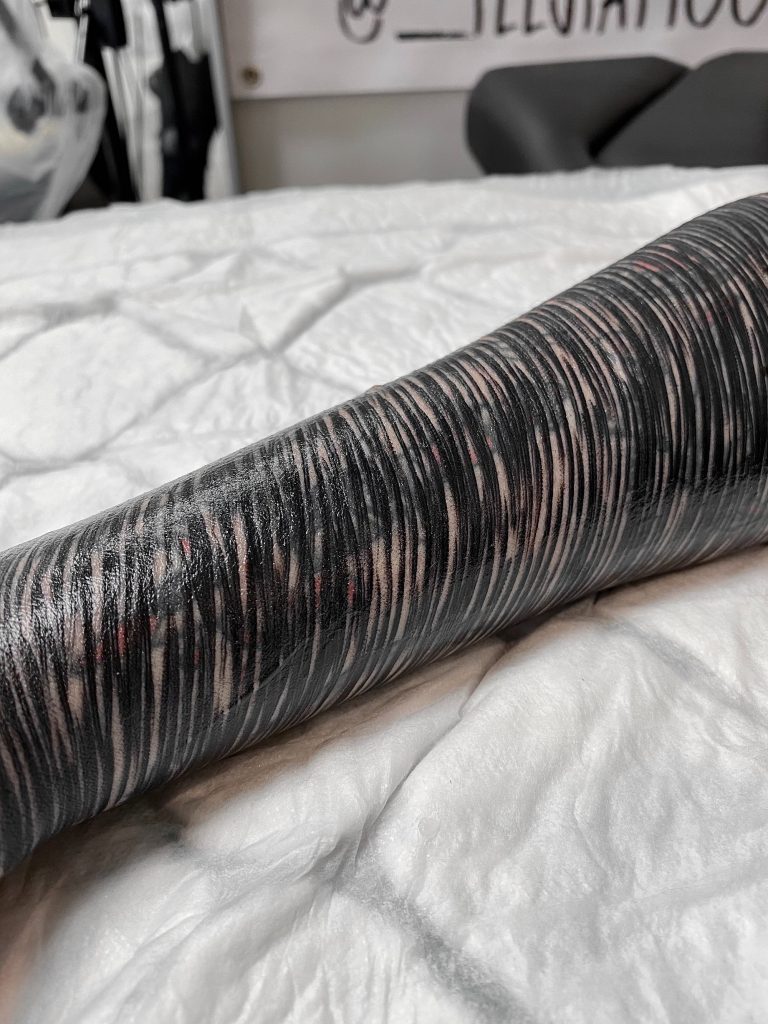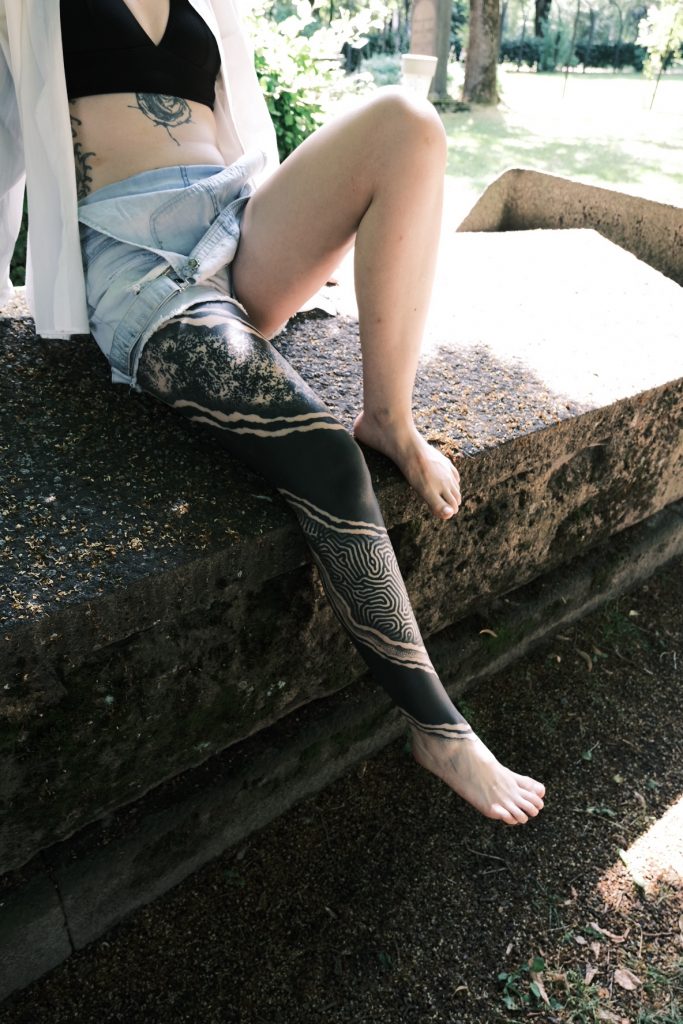About five years ago, Cameron Rennie bought an analogue camera from a vintage photography shop in his hometown of Edinburgh. He challenged himself to take ten portraits of his mates. They ended up being mostly heavily tattooed people. Seeing their images in black and white, something clicked aesthetically for Rennie. And so The Continuous Portrait Project was born on Instagram. Photos of people connected to the tattoo world, he wanted to capture its beautiful diversity.
Rennie travels all over the UK to meet tattooers to photograph while they chat. And this blog is an extract from Rennie’s brand new book, The Continuous Portrait Project, which is a selection of his favourite photos – along with a blurb of his memories of the meeting – a moment in time, if you will. Dive in and then buy the book…
words and photos: Cameron Rennie
EMILY COLLINS
Emily and I met at The Big North Tattoo Show in Newcastle, where she is based. At the time, she was running her brand called Rock & Rose Motel, which focuses on making prints and homeware using traditional American tattoo designs.
Around the time this photo was taken, Emily was beginning her apprenticeship at Blind Tiger Tattoo. If her designs from Rock & Rose are anything to go by, I’m sure she will make a fantastic tattooer; her passion and drawing ability are already both there. By the time this book comes out, she’ll be smashing it!
JADE CLARK
Jade’s roots in tattooing are grounded and traditional, which makes her work accessible and accommodating of so many different styles. There’s a real celebration in her work of all styles and interests, and I think this is a great reflection of who Jade is.
Jade’s ability to speak openly and honestly about issues faced in tattooing from underrepresented communities is considered and poignant. It’s been noticed by other outlets as well, as she’s taken to podcasts and panel discussions to continue these important discussions. This, combined with her huge personality, makes her an outstanding person to hang out with. She’s an asset to tattooing and symbolises what is so special about the UK tattoo scene.
KAT HARDY AND EION
Kat Hardy is a tattooer in Bangor, Northern Ireland, who runs the studio Four Oracles Tattoo. Her style blends neotraditional tattooing with dark and romantic elements. She’s also known as a go-to tattooer for rockstars, having tattooed numerous punk musicians. Not only does she tattoo the band members themselves, but she also has a real talent for creating designs that sympathetically reference the music and lyrics.
We opted to take Kat’s portrait in the grounds of Belfast’s botanical gardens. Kat came to meet me with her partner Eion, who I also found an instant connection with. While the shots of her on her own are stunning, I chose this image of the couple together – not only is it a fantastic shot, but it also serves as a reminder of a wonderful time.
NIKKI KOTECHA
Nikki is a Desi tattooer and motorbike enthusiast from London. We met at Regents Park on a scorching summer day, to talk about life, tattooing, and everything in between. When talking about the stigma of tattooing, I felt privileged to hear Nikki’s journey into tattooing and the struggles she has endured to follow her dream.
As our conversation deepened, I spoke about my experiences and thoughts on how I feel there is an unseen force that steers me to meeting certain people. Nikki told me how, in Indian culture, a person’s true purpose is also known as Dharma. This conversation also felt that it had been ‘steered’, as it was at a point in the project where I finally knew what I was put here to do. Although our conversation was brief, it was incredibly deep and meaningful.
RIZZA BOO
After initially meeting Rizza at the Brighton Tattoo Convention, we arranged to meet up for these photos in Glasgow, at her studio Shadow Work. Rizza is a truly special person, not only in her artistry but also as an avid campaigner in highlighting issues experienced by people of colour within the context of tattooing. In addition to this tireless and emotionally-labouring work, Rizza gave critical feedback and took the lead on developing the exhibition Tattoo: British Tattoo Art Revealed, Reclaiming the Narrative in 2022, to include the representation of people of colour.
Rizza is a deep thinker and someone I find very easy to get lost in conversation with. This photo was taken while her friend and fellow tattooer Lord Montana Blue was guesting with her. I was lucky enough to capture them in the midst of tattooing each other; I hope what I captured shows their mutual respect and admiration.
You can order the book from: kntpublishing.bigcartel.com/product/the-continuous-portrait-project
Launch party on Weds 5 Feb at Flamin’ Eight in Camden, London, info on Instagram
